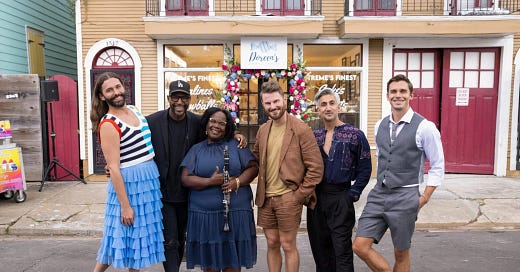In my latest ask me anything thread, I got this question:
I would love to know your thoughts on What Not to Wear and Queer Eye. I’ve loved both though it’s been ages since I’ve watched WNTW and I think I wouldn’t like it anymore. But QE is fraught for me. I enjoy it and I also have feelings.
My friend Rachel Cole has been asking me to write about Queer Eye for at least two years and I never got around to watching it (sorry, Rachel!), but for you, dear question-asker, I did.
First, let’s briefly talk about What Not to Wear (WNTW). I was and I’m sure many of you were at the age when we were trying to figure out life and how to dress ourselves and WNTW provided rules to live by when everything else felt chaotic.
However, even during the show’s airing, two things always seemed so mean to me: first, the ambushing. Imagine being out in public, doing your thing, and two bonkers people with cameras run up to you and tell you in so many words, hey, your mom/friend/coworker thinks you look like s…





